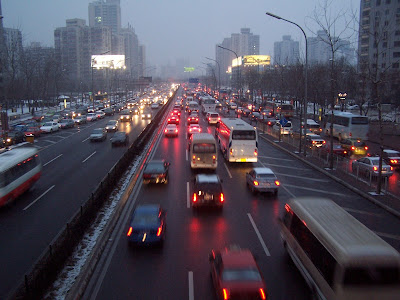







I heard something on the news the other day about Mumbai, India, and became curious about when and why the name of the city changed from Bombay. I knew why the country of Burma's name was officially renamed Myanmar, although many international journalists refuse to acknowledge the change. But when did Peking become Beijing and why did Constantinople become Istanbul? Here are the answers...
.
Peking (1st photo) to Beijing (2nd photo)
The name of the Chinese capital of Peking did not change - just the way it was Latinized. After the People's Republic of China was established in 1949, the government adopted a new transliteration method that changed the way the city was spelled in English. The pronunciation never changed in the East, and many Chinese were unaware of the perceived name change. Westerners continued to use both names until China began enforcing the use of the official name "Beijing" on all flights, sea routes, and official documents in the 1980s.
.
Constantinople (3rd photo) to Istanbul (4th photo)
The most well-known city in Turkey has had many names. After the Ottoman conquest in 1453, "Konstantiniye" was preferred to "Constantinople." The Greek word "Stambulin" ("the City") was often found on roadsides and punningly changed to "Islambol" ("where Islam abounds") by devout Turks. After the demise of the Ottoman Empire in 1923, "Stamboul" was most often used, although it was called "Constantinople" by Westerners well into the 20th c. Mustafa Kemal Atatürk (1881-1938), founder of the Republic of Turkey, adopted "Istanbul" as the city's official name, but Europeans showed great resistance, calling it "Konstantineopel" in Germany, "Constantinople" in Britain and France, "Konstantinopoli" in Italy, and "Konstantinopolis" in Greece. "Istanbul" was used in parentheses on Western maps into the 1960s, even though the current name also has early roots. The Byzantines were believed to have called it merely "the city" because of its size, so "eist enpolin" ("is tin polin") referred to going to the city, which may have been the origin of the current name, which was familiar to the Turks in the 11th c.
.
Bombay (5th photo) to Mumbai (6th photo)
When the right-wing Hindu nationalist party Shiv Sena won elections in the state of Maharashtra in 1995, they announced that the port city of Bombay was being renamed "Mumbai" after the Hindu goddess Mumbadevi. Federal agencies, local businesses, and newspapers were ordered to adopt the new name. Shiv Sena argued that "Bombay" was a corrupted English version of "Mumbai" and a remnant of British colonial rule, although the national government opposed the name change, fearing that the city would lose its international identity. The change seems to have been successful, although the Shiv Sena's intention to do away with the term "Bollywood" has not.
.
Burma (7th photo) to Myanmar (8th comparison photo)
The ruling military junta changed Burma's name to "Myanmar" in 1989. The change was recognized by the United Nations and countries including France and Japan. But the U.S. and the U.K. continue to use both names because they refuse to accept the legitimacy of the unelected military regime, which also changed the name of Rangoon, the country's former capital, to "Yangon." "Burma" and "Myanmar" refer to the same thing and one word derives from the other. "Burma" is the infomal word used in conversation, and "Myanmar" is the literary, ceremonial, and official form. Imposing the formal name is a form of censorship, so the use of it in the international community indicates where sympathies lie.
When the right-wing Hindu nationalist party Shiv Sena won elections in the state of Maharashtra in 1995, they announced that the port city of Bombay was being renamed "Mumbai" after the Hindu goddess Mumbadevi. Federal agencies, local businesses, and newspapers were ordered to adopt the new name. Shiv Sena argued that "Bombay" was a corrupted English version of "Mumbai" and a remnant of British colonial rule, although the national government opposed the name change, fearing that the city would lose its international identity. The change seems to have been successful, although the Shiv Sena's intention to do away with the term "Bollywood" has not.
.
Burma (7th photo) to Myanmar (8th comparison photo)
The ruling military junta changed Burma's name to "Myanmar" in 1989. The change was recognized by the United Nations and countries including France and Japan. But the U.S. and the U.K. continue to use both names because they refuse to accept the legitimacy of the unelected military regime, which also changed the name of Rangoon, the country's former capital, to "Yangon." "Burma" and "Myanmar" refer to the same thing and one word derives from the other. "Burma" is the infomal word used in conversation, and "Myanmar" is the literary, ceremonial, and official form. Imposing the formal name is a form of censorship, so the use of it in the international community indicates where sympathies lie.









No comments:
Post a Comment
You may add your comments here.